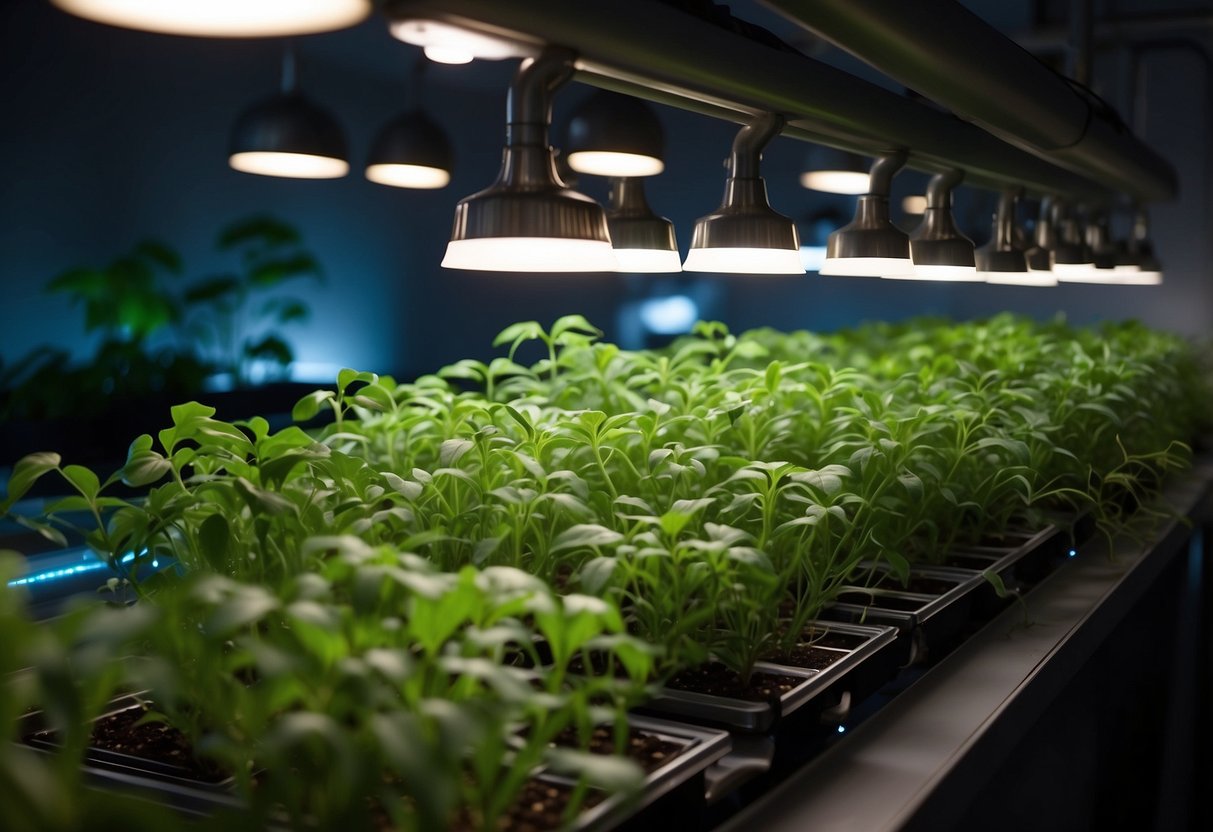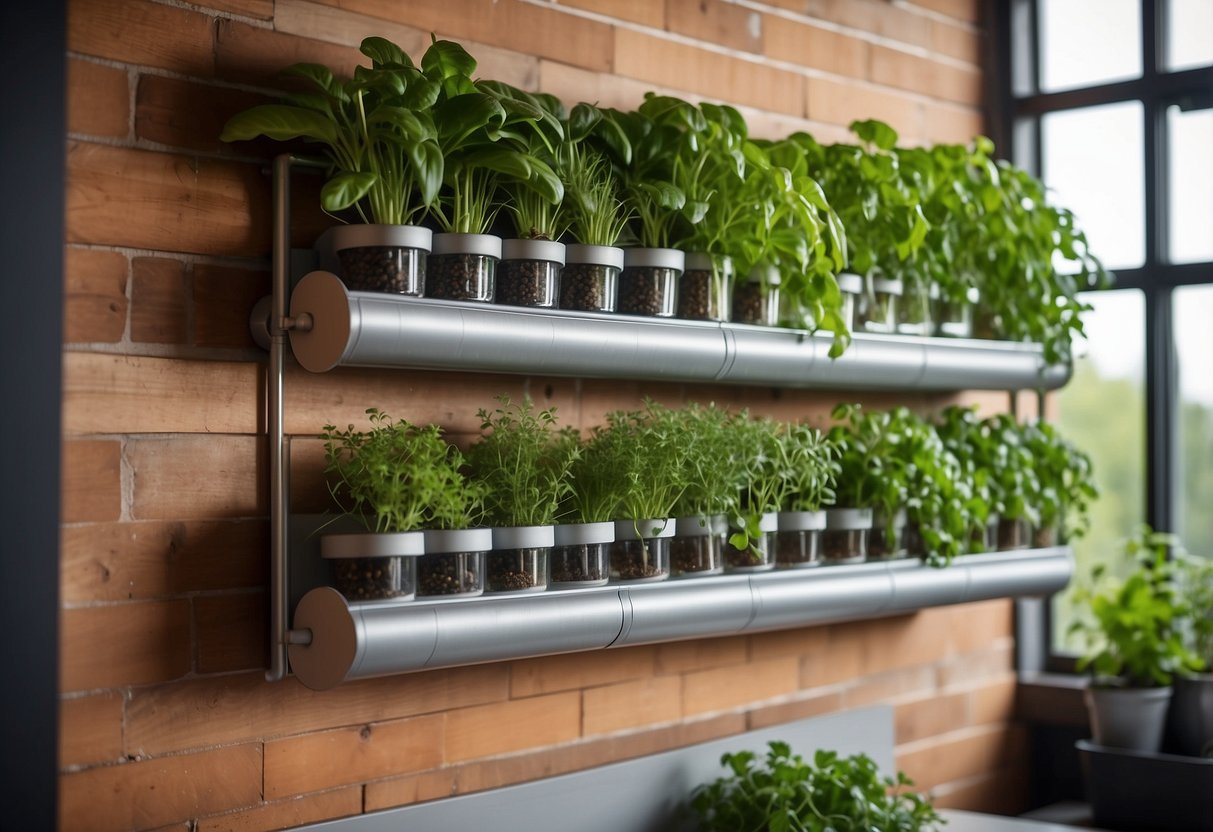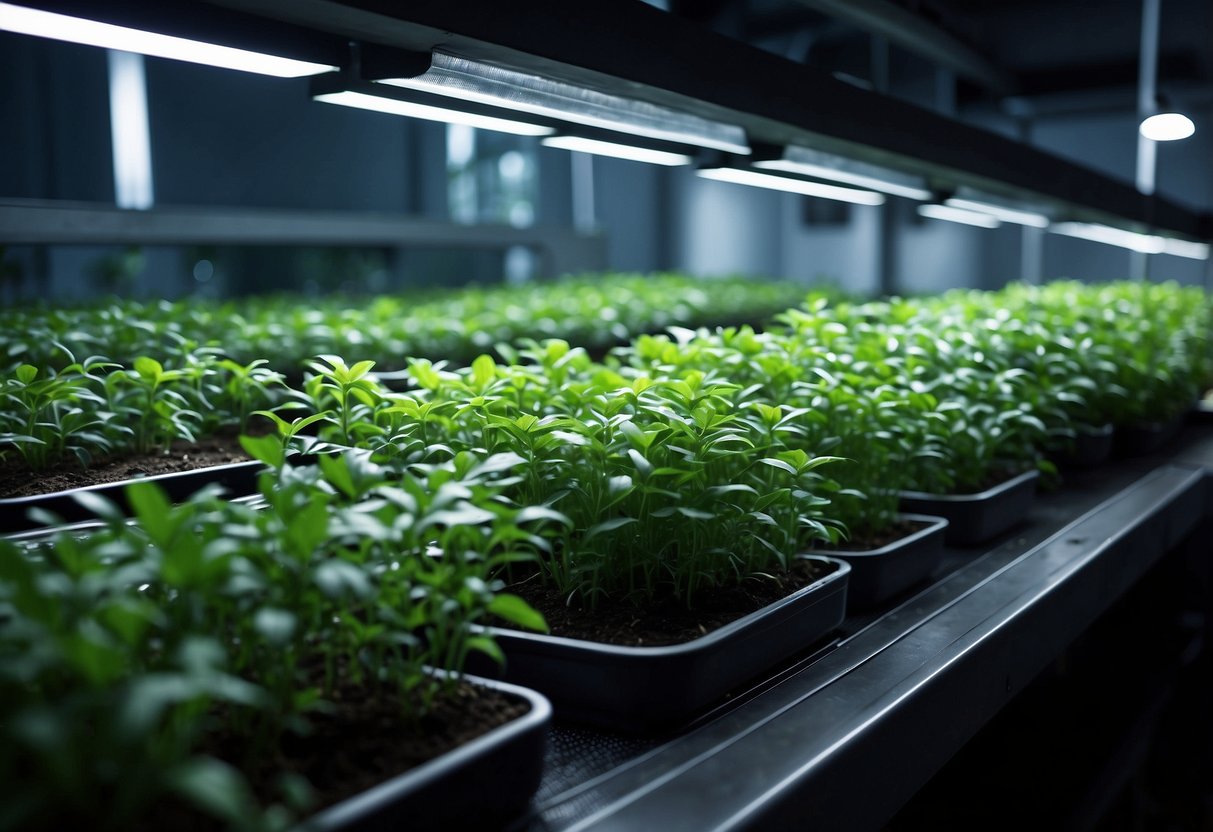Hydroponic Garden Ideas for Small Spaces
Creating a hydroponic garden is an exciting project that lets you grow plants without soil. By providing plants with all the nutrients they need through a water-based system, you can cultivate a variety of herbs, vegetables, and more right in your home. Hydroponics allows you to garden year-round, offering fresh produce regardless of the season.

You don’t need a lot of space to start a hydroponic garden, making it ideal for urban settings or small apartments. The flexibility and efficiency of hydroponics make it a popular choice for both beginners and seasoned gardeners. Ready to explore some innovative hydroponic garden ideas? Let’s dive in!
1) Wall-Mounted Herb Garden

You can create a wall-mounted herb garden with just a few easy steps. Mounting mason jars on a piece of wood is a popular and simple option.
Another idea is to use a vertical frame on a patio wall to grow herbs like rosemary and thyme. This saves space and adds greenery to your space.
For those looking for a bit of tech, the Vertefarm Vertical Hydroponic Indoor Garden offers a sleek, self-contained unit perfect for indoor use.
2) Vertical Hydroponic Tower

A vertical hydroponic tower is a great way to grow plants if you have limited space. It allows you to grow multiple plants in a small footprint.
The tower is typically made of PVC pipes and uses water-based solutions to feed the plants. This method ensures your plants get the nutrients they need.
You can place these towers indoors or on a patio. Adding grow lights can help indoor setups thrive by providing essential light for photosynthesis. This setup is perfect for urban environments. For more details, check out hydroponic vertical garden towers.
3) Mason Jar Hydroponics

Mason jar hydroponics is a fun and simple way to get started with growing plants without soil. You’ll need some mason jars, net pots, hydroponic nutrients, and a growing medium like pebbles or rockwool.
Fill the jars with a mix of water and nutrients. Make sure the water level is just above the bottom of the net pot.
Place your plant seedlings or seeds in the net pot, then gently cover them with more growing medium. Put the jars in a sunny spot or under artificial lighting. Only add water when the water line has been down for a few days.
4) DIY PVC Pipe System

A DIY PVC pipe system is a simple and cost-effective way to start hydroponic gardening. Start by cutting the PVC pipes to your desired length.
Next, drill evenly spaced planting holes on the larger pipes. This allows plants to grow efficiently.
Make sure to add an irrigation system. You can create this by cutting smaller PVC pipes and adding irrigation holes. This provides consistent water and nutrient flow.
Fill the pipes with soil or hydroponic medium and start planting. Use disposable cups with clay pellets for seedlings or clones.
5) Aquaponic Herb Garden

An aquaponic herb garden combines growing plants and raising fish in one system. You use the fish waste to fertilize your herbs, creating a self-sustaining ecosystem.
Start by cleaning and rinsing out your fish tank. Add decorative gravel and an airstone/pump if desired. Fill the tank with water and acclimate your fish to their new home.
Place your herbs above the tank so their roots can reach the water. If you need a guide on setting this up, check out the Food Gardening Network’s guide.
6) Hydroponic Windowsill Garden

A hydroponic windowsill garden is perfect for small spaces. It uses water instead of soil and works well in apartments.
Start by choosing a sunny windowsill. You’ll need containers, a small water pump, and some nutrient solution.
This type of garden often needs extra light in the winter. You can add a grow light to make sure your plants thrive.
With a few easy steps, you can enjoy fresh herbs and veggies year-round. Try growing basil, lettuce, or even strawberries on your windowsill.
7) Strawberry Planter

Growing strawberries in a hydroponic garden is a fun project. You can use a hydroponic strawberry tower to save space and promote healthy growth. These towers allow you to stack plants vertically.
Another idea is to use a horizontal system like guttering along your porch. Hang them from wires or attach them to a fence.
Ensure your strawberries get 8-12 hours of light daily. This helps them grow big and tasty.
8) Gutter Garden

A gutter garden is a space-saving way to grow plants using narrow, recycled gutters. You can mount these gutters on walls, fences, or even the side of a house. This method is great for small spaces or urban areas.
The setup is simple. Just secure the gutters, fill them with soil or a hydroponic mix, and plant herbs, flowers, or small veggies. You can even create a self-watering system to make it low-maintenance.
Maximize your growing space and enjoy fresh produce right from your wall!
9) Kitchen Countertop System

A kitchen countertop hydroponic system is perfect for small spaces. It’s easy to manage and ideal for growing herbs and small vegetables.
The Click and Grow The Smart Garden 3 is a great option. It’s simple to use and only takes up a small area on your counter.
With its built-in light and automatic watering, it’s almost like the plants take care of themselves.
10) Hydroponic Flower Garden

Growing flowers hydroponically can be both fun and rewarding. You don’t need soil, just water and nutrients.
Peace lilies are a great choice. They grow best at temperatures between 68°F and 80°F. Keeping their leaves clean can help prevent pests like aphids and mealybugs.
You can also try a Vertical Gutter Garden. These systems use rain gutters to grow your flowers in a vertical setup. Add water and nutrients to the system for thriving plants.
Basics of Hydroponic Gardening

Hydroponic gardening is a method of growing plants without soil, relying instead on nutrient-rich water. This guide will introduce you to what hydroponic gardening is, its benefits, and what you need to get started.
What Is Hydroponic Gardening?
Hydroponic gardening is a way to grow plants using only water, nutrients, and a growing medium. Instead of soil, you use materials like rockwool, perlite, or clay pebbles. The idea is to let the plant roots have direct access to nutrient-rich water, which helps them grow faster and healthier.
You will need a hydroponic system which includes a reservoir for water and nutrients, air pumps to keep the water oxygenated, and a light source if you are growing indoors.
Benefits of Hydroponics
Hydroponic gardening offers many advantages:
- Faster Growth: Plants tend to grow faster because they get nutrients directly from the water.
- Space-Saving: You can grow more plants in smaller spaces, making it ideal for urban gardening.
- Water Efficiency: Uses up to 90% less water compared to traditional soil gardening.
- Controlled Environment: Easier to control pests and diseases, leading to healthier plants.
- Year-Round Gardening: You can grow plants indoors all year long, regardless of outside weather.
Getting Started: Basic Requirements
To begin hydroponic gardening, you need a few key elements:
- Hydroponic System: This could be DIY or purchased. Common systems include Nutrient Film Technique (NFT) and Deep Water Culture (DWC).
- Grow Lights: Essential for indoor gardens to replicate sunlight. LED lights are the most efficient.
- Nutrients: Specially formulated solutions available in stores. They include essential minerals like nitrogen, phosphorus, and potassium.
- Water: Use filtered or dechlorinated water to avoid harming your plants.
- Air Pumps and Stones: Keep the water oxygenated to help roots breathe.
By ensuring you have these essentials, you can start your hydroponic garden and enjoy the many benefits this method offers.
Choosing the Right Plants for Hydroponics

Picking the ideal plants for hydroponic gardens depends on your experience, desired crops, and how well certain plants adapt to the system. Below are helpful tips on selecting vegetables, herbs, and great starter plants.
Best Plants for Beginners
Starting with easy-to-grow plants helps you get the hang of hydroponic gardening. Basil is a fantastic option since it grows quickly and is hardy. It’s also versatile for cooking. Basil can thrive in hydroponics, and it’s ready to harvest in just a few weeks.
Lettuce is another great beginner plant. It grows rapidly and doesn’t require much maintenance. You can start harvesting fresh leaves within a month.
Spinach is also perfect for newbies. It’s nutritious, easy to grow, and offers a continuous harvest. Spinach can be harvest-ready in 30 to 40 days.
Popular Hydroponic Vegetables
Growing some vegetables hydroponically can be satisfying and productive. Tomatoes are a popular choice. They require a bit more care, like supporting the vines, but the flavor is rewarding. Cherry and grape tomatoes are particularly well-suited for hydroponics.
Cucumbers grow well and can produce a bountiful crop. Opt for smaller varieties as they are easier to manage. They need plenty of light and support as they grow.
Peppers are another excellent option. Both bell peppers and chili peppers adapt well to hydroponic systems. They need full sun and consistent nutrients, but they can thrive and produce a generous yield.
Ideal Herbs for Hydroponics
Herbs are perfect for hydroponic gardens due to their ease of growth and versatility in cooking. Basil, as mentioned earlier, is a fantastic choice.
Mint is another excellent herb that grows rapidly in hydroponics. It requires lots of light and can quickly provide fragrant leaves for teas and cooking.
Cilantro grows well hydroponically and is a must-have for any herb garden, adding a fresh flavor to dishes. Ensure it gets full sun and proper nutrients.
Parsley is also a good choice. It’s easy to care for and perfect for garnishing and enhancing flavors in various recipes.
With these plant options, your hydroponic garden can be both enjoyable and fruitful.
Maintaining Your Hydroponic Garden

Keeping your hydroponic garden in great shape involves checking nutrient levels and managing light and temperature. These factors ensure your plants grow strong and healthy.
Monitoring Nutrient Levels
To keep your hydroponic system thriving, regularly check the nutrient levels. Every plant needs a balanced mix of nutrients to grow properly. Use a nutrient solution tailored for hydroponic gardens.
Test the pH often. Plants prefer different pH levels. Leafy greens like a pH of 5.5 to 6.5, while fruiting plants such as tomatoes and strawberries prefer 6.0 to 6.8.
Invest in a digital pH meter. This tool makes it easy to get accurate readings. Adjust the nutrient solution based on the pH readings to keep it in the ideal range.
Managing Light and Temperature
Light and temperature are crucial for plant growth. Most plants need at least 14-16 hours of light per day. Use LED grow lights, which are energy-efficient and provide the proper light spectrum.
Ensure the temperature is right for your plants. Most hydroponic plants thrive at 65-75°F (18-24°C). Use a thermostat and fan to maintain consistent temperatures.
Check for signs of stress. If leaves are wilting or turning yellow, you might need to adjust light or temperature settings. With careful monitoring, your hydroponic garden will flourish.







